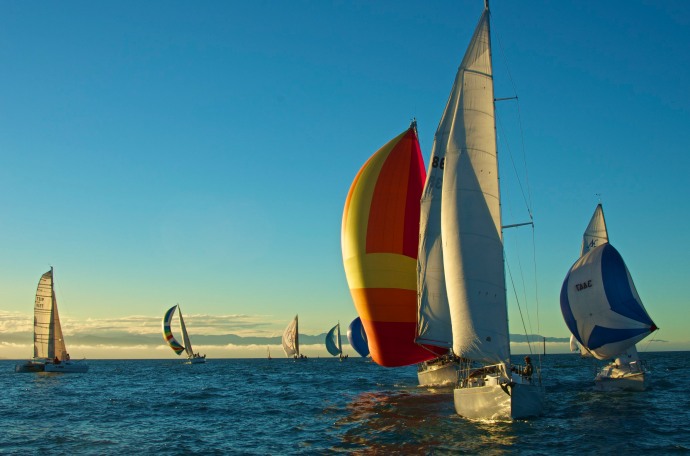Our trip on the North Island began in the town of Wellington. After 8 months away, it was great to be back in a city again. I didn’t think I would miss it that much, but enjoyed being around the people, noise, and hustle of a city life.
When visiting Wellington, you can’t miss Te Papa museum. Host to much of new Zealand’s diverse cultural history, it is worth a full day of exploration. The largest intact species of a colossal squid, Maori artwork, life size recreation of Moa, and most importantly the exhibit below, which could be one of the most significant pieces of scientific advancement of our time.

Most likely the ‘new guy’ trying out the helmet.
Te Papa is only one part of the ‘Welly’ experience. Exploring the hills around town, we stopped by a few farmer’s markets, went to Parliament, saw the famous cable cars in action, and grabbed a few beers at one of the many hip watering holes around town. If you are into your craft beers, then Hashigo Zake is the joint to grab a cold one. A funky place, located in the basement of a near-by alley, these guys pride themselves on their knowledge of hops and barley.

Wellington Cable Cars
One hangup about cities everywhere, is they aren’t exactly suited for a backpacker’s budget. A few days of living there sent us on our way, back to the tents, and simple lifestyle that we have grown accustomed to. On the road and heading northeast, we reunited with our flatmate from Queenstown; Ben Marshall and his lady in the small town of Te Awanga. The town is surrounded with some of NZ’s most famous vineyards, bringing in savvy wine tasters from all over the world.
The beautiful countryside leads right up to the coast, where the swells draw a bit more disheveled surf crowd, who often end up picking the grapes that satisfy the upper crust wino’s palette. Marshall and Prue, both surfers, convinced us that staying here would be the best option for the next few days. A few days, however, soon turned into over a week.

Marshall riding out a wave at Te Awanga
With a little pep talk from the seasoned vets, we paddled out into the surf. Like any first day, there is a learning curve. Surfing’s curve is steep, but there is no denying that it is addictive. The feeling you get, sitting on your board past the break, rolling with the waves, is a peaceful and calming effect that only the rhythm of nature offers.

Waimarama Beach near Te Awanga

The crew at Waimarama, and the only part of surfing that I have mastered so far.
All good things must come to an end, and after 9 days we decided to move further inland, towards the volcanic activity that gives the North Island its reputation. A day’s worth of driving deposited us near the Tongariro Crossing, the volcanic walk that North Island is known best for. There are plenty of adjectives to describe this place, quite simply put, it was incredible.
Three volcanoes are visible throughout the trail; Tongariro, Ngauruhoe, and Ruahepo. Ordered from lowest to highest in elevation, Ruahepo also has the distinction of being NZ’s tallest active volcano. Weather was finicky, and it was questionable whether we were going to be have a view of any of the volcanoes, let alone attempt the crossing. An overnight wind provided us with a very lucky break, yielding bluebird skies and low winds in the morning, offering a window to summit Ngauruhoe at 2291m.

Ngaurahoe summit from the base
This is the most conical shaped volcano in the Tongariro Crossing, and also the filming location of Mt. Doom in the Lord of the Rings movies. The climb takes you to the edge of the crater at its summit with Ruahepo’s snow covered peak in the not too far off distance. Needless to say, the view was spectacular.

Ngauruhoe Crater with Ruahepo in the distance
Along the trail to the summit, vents blew steam into the sky, making a statement about the natural wonder that you stood on and served as a reminder that all three of these volcanoes are still very active, with Tongariro erupting as early as this past November.

From the summit
The summit climb was moderately difficult, with slippery footing due to the scree and ash. What it lacked in the climb up, however, made up on the way down. The soft ash cushioned your footing, which made it possible to pick a line and send it. Our ascent took over an hour, the descent was about 15 minutes. That will go down as easily the best and most fun way to get down a mountain without a snowboard that I’ve ever had.

Ngauruhoe
Further along the Tongariro Crossing sit the Emerald Lakes. Each of these lakes hold a different hue of green or blue, due to the sulfur content that each one of them contain.

Emerald Lakes
As we continue to push North towards Auckland, Fall is starting to settle in. It seems that we are chasing the warmer weather, but it is starting to cool down enough at night that layering up is becoming a necessity. Only a few more weeks of that though, before our flights to Australia on May 22nd dip us right back into the warm weather climate, and surf that we are now craving. If you can’t have a winter on the mountain, then it looks spending it on a wave is going to be the next best thing.

Thanks for the read, and the ‘likes, don’t forget to follow, and check out more pics on my flickr!






























































